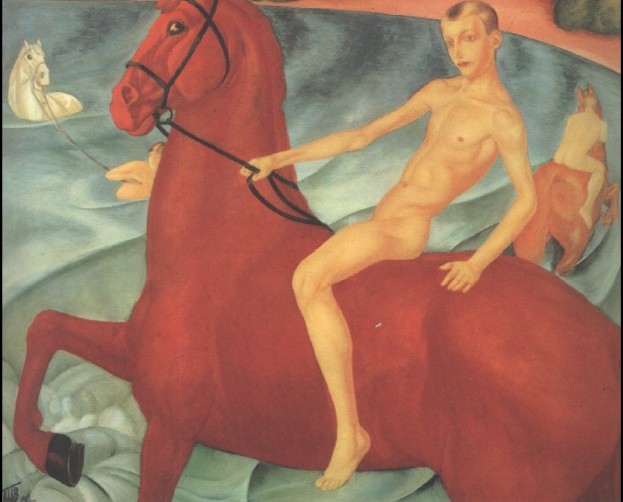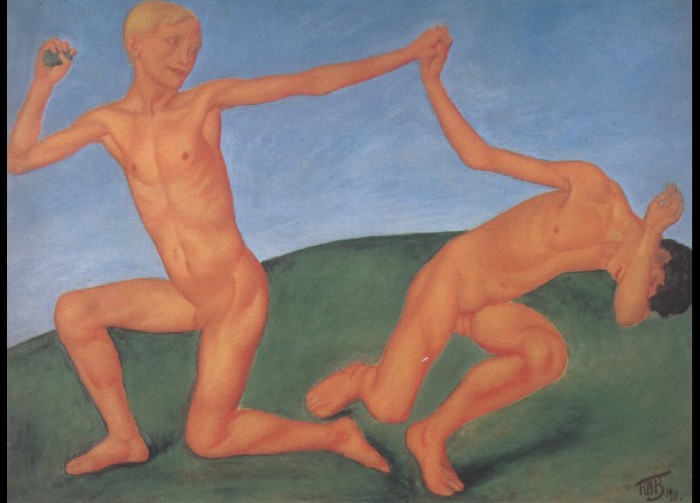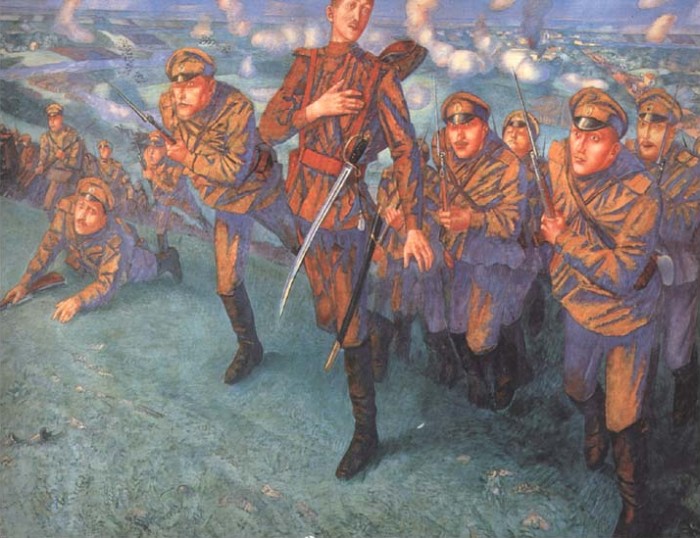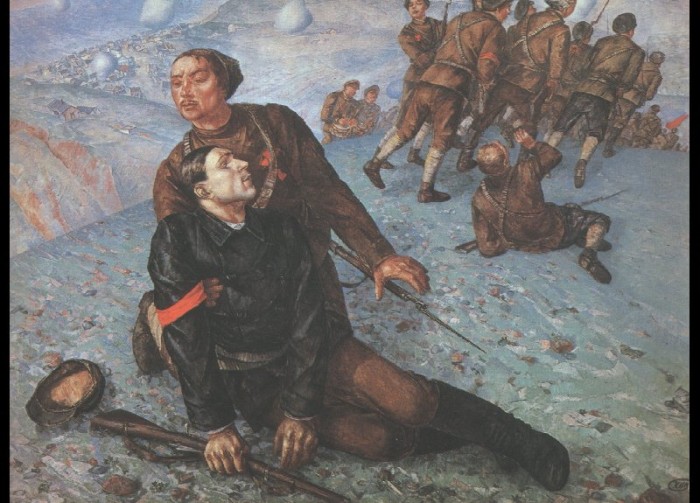Kuzma Petrov-Vodkin (Кузьма Сергеевич Петров-Водкин) (1878-1939)
We Perform Kuzma Petrov-Vodkin art authentication. Kuzma Petrov-Vodkin appraisal. Kuzma Petrov-Vodkin certificates of authenticity (COA). Kuzma Petrov-Vodkin analysis, research, scientific tests, full art authentications. We will help you sell your Kuzma Petrov-Vodkin or we will sell it for you.

Kuzma Petrov-Vodkin was born in Khvalynsk (now Engels) outside Saratov, to the family of a shoe maker. His first exposure to art was in his early childhood, when he took some lessons from a couple of icon painters and a signmaker. Still, Petrov-Vodkin didn’t quite see himself in art at that time; after graduating from middle school, he took a summer job at a small shipyard with plans to get into railroad college in Samara. After failing his exam, he turned to “Art Classes of Fedor Burov” in 1893.
.jpg)
In April 1895, Burov died and for some time Petrov-Vodkin took different painting jobs in the vicinity of Saratov. By chance, his mother’s employer invited a well-known architect, R. Meltzer. Petrov-Vodkin was introduced to the guest and impressed him enough to get an invitation to study art at Saint Petersburg. The education was financed by a charitable subscription among local merchants. He also met at this time Borisov-Musatov, an important painter resident in Saratov, who encouraged Petrov-Vodkin to continue his studies.

Petrov-Vodkin stayed in Saint Petersburg from 1895 to 1897 studying at the Baron Stieglits School, before moving to the Moscow School of Painting, Sculpture and Architecture. There Petrov-Vodkin was a student of Valentin Serov, Isaak Levitan and especially Konstantin Korovin. In 1901 he traveled to Munich to take classes with Aschbe. He graduated in 1904. While in Paris in 1906 he met and married Maria Jovanovic (1885-1960), a daughter of Serbian immigrant hotel-keepers. She remained his lifelong companion. They had two daughters, one of whom died in childhood.
.jpg)
Even during his college years, Petrov-Vodkin managed to enter into conflict with the Russian Orthodox Church, which discarded his work on a chapel in Samara and ultimately destroyed it as unacceptable. A number of his early works were deemed too erotic. His first well-known work was The Dream (1910), which sparked a discussion among contemporary Russian artists. The main defender of the painting was Alexandre Benois, and his main detractor – Ilya Repin (thus, the work was discussed by two major Russian painters of the time). Other major works of that time include Boys at play, and, notably, Bathing of a Red Horse, his most iconic work. The latter became an instant classic, and, in a sense, trademark for the artist.

During this stage in his artistic development, Petrov-Vodkin extensively used an aesthetic of Orthodox icon together with brighter colors and unusual compositions. His works were often deemed blasphemous and erotic. From 1924 to 1926 Petrov-Vodkin lived in France with his family. During his earlier years, Petrov-Vodkin developed his “spherical perspective”: a unique twist that distorted the drawing as to represent the viewer high enough to actually notice the spherical curve of the globe. He used it extensively through his works like Death of a Comissar and In the Line of Fire, which make the observer seem more distant, but actually close. It is argued that this twist has been built upon Byzantine perspective – an inverted perspective used in iconography.

Petrov-Vodkin used darker tones with time, but his paintings became more detailed. He started painting still life and portraits, stepping further away from his previous themes. With help from the Soviet government, he made several trips across the Soviet Union, producing many works with didactic purposes. In 1927, Petrov-Vodkin contracted pulmonary tuberculosis and had to curtail painting for several years. He turned to literature and wrote three major semi-autobiographical volumes, Khvalynsk, Euclid’s Space and Samarkandia. The first two of these are considered on a par with the finest Russian literature of the time.

The return to painting was problematic: his draftsmanship became caricature-like, and his subjects often turned satirical – this is ascribed to the suffocating atmosphere caused by Stalinist cultural policies of the 1930’s through the Great Purge of 1937-1939. However there arenotable among works of this period, in partucular 1919. Alarm. (1934), which basically displays the uneasiness of the time. Petrov-Vodkin died of tuberculosis in February of 1939. Until the mid-1960s, Petrov-Vodkin was nearly forgotten in the Soviet Union as not true to the spirit of Socialist Realism. However, during the time of Nikita Khrushchev he was rediscovered and rightfully reinstalled as one of the major Russian painters.
.jpg)
Still wondering about a 20th century Russian painting in your family collection? Contact us…it could be by Kuzma Petrov-Vodkin.
Reviews
1,217 global ratings
5 Star
4 Star
3 Star
2 Star
1 Star
Your evaluation is very important to us. Thank you.
